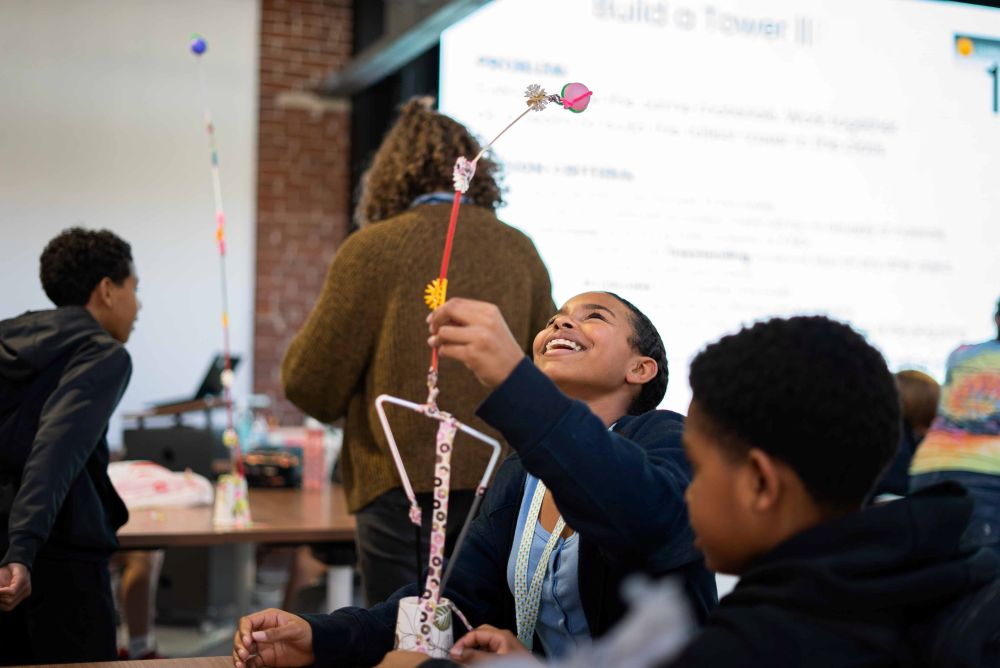Students are always excited when they walk into Fluxspace! A visit to Fluxspace is a unique opportunity to engage in hands-on activities.
The students are put into small groups, where they are then given a tray of miscellaneous materials. The students have 15 minutes to build a tower that will hold a ping pong ball off the table as high as they can. Once the time is up, we talk about how tall the students were able to build their towers. But more importantly, we talk about failure as a part of the process. I try to emphasize that when something doesn’t work out the way we want it to, it’s an opportunity to learn and to make modifications.

Next, the students are given 15 minutes to create something that will hold their ping pong ball in the air for as long as possible using our wind tunnel. I love how excited the students get when they see their ping pong ball take off in flight! It’s such a thrilling moment for them, as they see their ideas come to life and realize that they are in control of the design process. I encourage them to experiment, make modifications, and see how different variables, like weight and airflow affect the flight time.

I always remind them that trial and error are essential to the design process. Sometimes the balls drop unexpectedly, and that’s fine! I stress the importance of failure in innovation — it’s not just about what works, but about understanding why something doesn’t work and how we can adjust our approach.
After the wind tunnel challenge, we circle up as a group to discuss the different strategies each team used. We analyze what made some designs more successful than others and talk about how the concepts of engineering, physics, and problem-solving were involved. It’s amazing to see how the students reflect on their experiments and how they begin to think critically about what they’ve built and how they can improve it next time.

When students leave Fluxspace, they walk away with more than just new knowledge; they leave with the excitement of discovery and a deeper appreciation for the design thinking process. I always look forward to the next STEM Day because every time, I’m reminded of how powerful hands-on learning can be — not just for students, but for everyone involved.

Project Examples
Have a solution to this challenge you want to share? Take a photo or video of your prototype, post it on social media, and don’t forget to tag us @fluxspace_io




